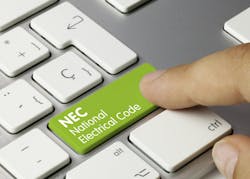Understanding NEC Art. 500
NEC Art. 500 provides the foundation for understanding and applying Arts. 501, 502, and 503, a series devoted to hazardous locations. It also provides the general requirements for these locations. That is, if a rule appears in Art. 500, then it applies to all installations covered by those three Articles. Those three are essentially as follows:
- Art. 501. Class I. Flammable gases or vapors.
- Art. 502. Class II. Combustible dust.
- Art. 503. Class III. Combustible fibers.
Its requirements do not apply to Arts. 504 (intrinsically safe), 505 (Zone 0, 1, 2), or 505 (Zone 20, 21, 22) [500.1(B)]. But a good understanding of Art. 500 and its concepts will help you better understand these three articles.
Article 500 explains how locations are classified [500.5] in terms of Class (I, II, or III) and Division (1 or 2). It also fleshes out the classification more than the gist of it given above. But what is a Division? Article 500 provides more detail, but here is a summary of the Divisions and their definitions:
- Division 1. The flammable substance is normally present (or may be normally present) in quantities sufficient for combustion. So during normal operations, the hazard is present.
- Division 2. The flammable substance is not normally present, but during an abnormal situation it is present (or may be present). For example, a flange gasket springs a leak, and combustible gas that wasn’t normally present is now present.
There are also groupings of materials [500.6] for each Class. For example, Class I has four Groups (A, B, C, and D). Acetylene is by itself in Group A. The other groups are differentiated on the basis of the size of the maximum experimental safe gap or a minimum igniting current ratio.
Protection techniques are also covered [500.7]. These include such things as nonincendive circuits and oil immersion.
Article 500 ends with the requirements for equipment [500.8]. These include suitability, approval for use, process seals, and equipment temperatures.
